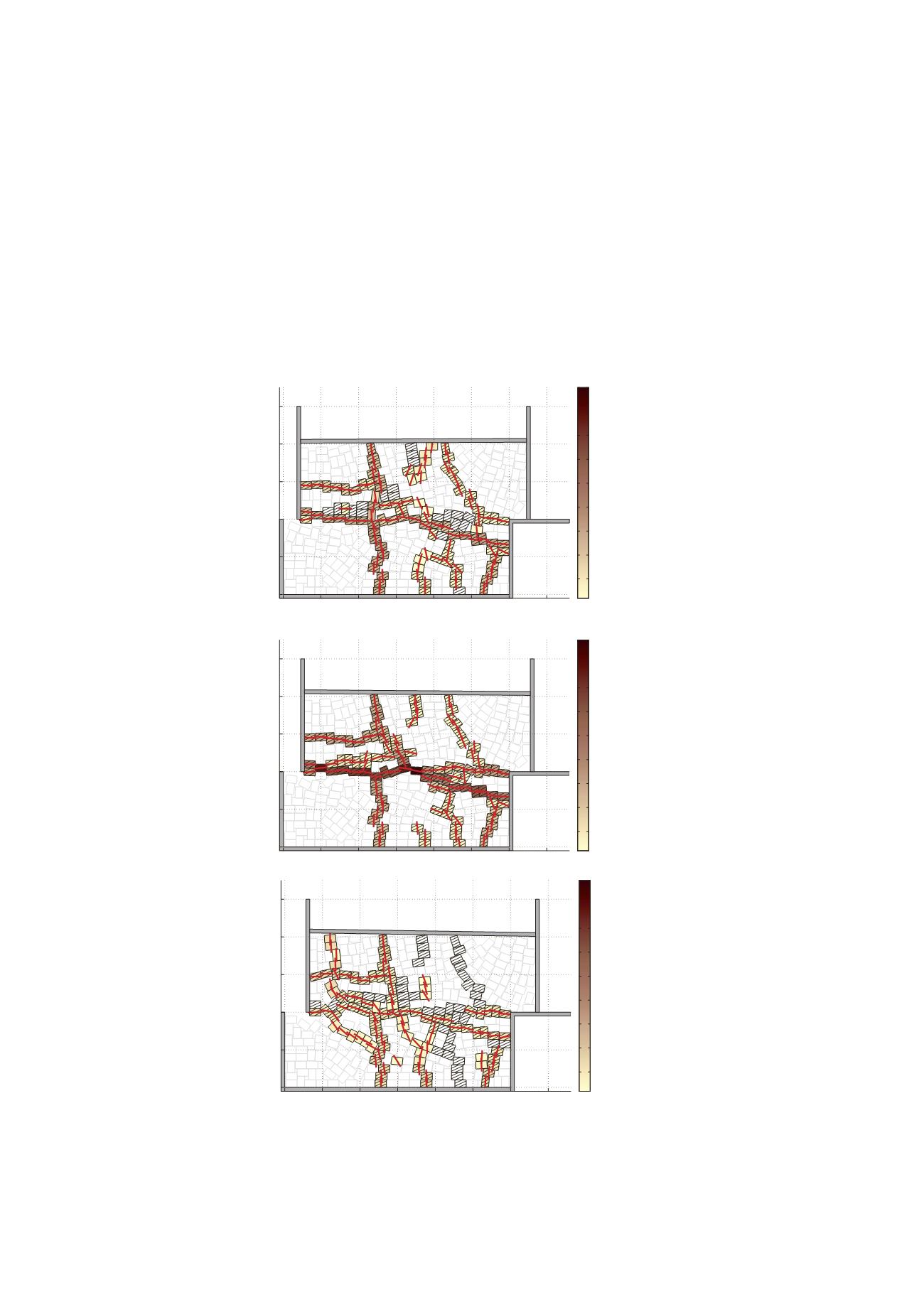

25
SAMC
o
T
• ANNUAL REPORT 2015
Figures WP2_9, WP2_10 & WP2_11: Force chains development through simulations of a shear box test
x
[m]
y
[m]
0
0.1
0.2
0.3
0.4
0.5
0.6
0.7
0
0.1
0.2
0.3
0.4
0.5
ˆ
σ
∗
1
[-]
0.2
0.3
0.4
0.5
0.6
0.7
0.8
0.9
1
x
[m]
y
[m]
0
0.1
0.2
0.3
0.4
0.5
0.6
0.7
0
0.1
0.2
0.3
0.4
0.5
ˆ
σ
∗
1
[-]
0.2
0.3
0.4
0.5
0.6
0.7
0.8
0.9
1
x
[m]
y
[m]
0
0.1
0.2
0.3
0.4
0.5
0.6
0.7
0
0.1
0.2
0.3
0.4
0.5
ˆ
σ
∗
1
[-]
0.2
0.3
0.4
0.5
0.6
0.7
0.8
0.9
1
Polojärvi has also addressed several other aspect through
numerical analysis through discrete (DEM) and combined
finite-discrete (FEM-DEM) simulations. Experimental work
in NTNU laboratory with a shear box formed the basis for
studying how to understand ice rubble behavior in shear box
tests can be interpreted. The study showed that one should
account for granular behavior of the ice rubble in shear box
tests or otherwise one may measure something that one
did not set out to measure. The simulations showed that
force chains generated inside the shearing rubble causes
high loads measured in an experiment. Figures WP2_9,
WP2_10 & WP2_11 show how the force chains develop
through simulations of a shear box test. In 2015 the journal
paper was published. Polojärvi continued his work on the
behavior of partly consolidated ice rubble. He implemented
a numerical model for freeze bonds bonding the blocks
within an ice rubble, and work towards a paper on this is
on the way. Finally, Polojärvi addressed the modelling of
3D sheet for ice-structure interaction simulations and
published preliminary results on POAC15.
















